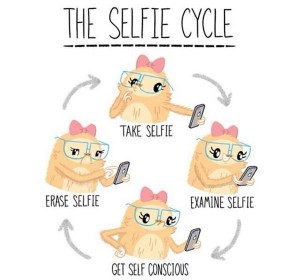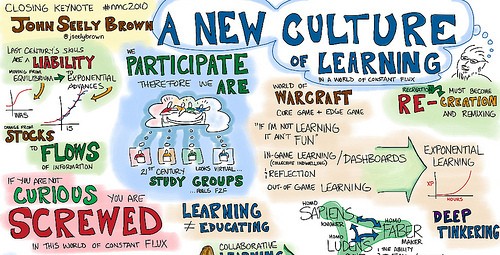 “My brain is hurting but not in a good way” was what I heard from a student while conferencing. She was reading a challenging article in French class, something of interest to her, and it was pushing her to the limit in that first period after the March Break. I said “You’re welcome”, gave her a high five, and asked what strategies she could use to help her with her reading. She said she was just tired and it was a lot to walk back into! After I explained the generation of new neural pathways I explained that that’s what we’re working on – helping students find resilience, grit and determination to learn. But what if it’s not working?
“My brain is hurting but not in a good way” was what I heard from a student while conferencing. She was reading a challenging article in French class, something of interest to her, and it was pushing her to the limit in that first period after the March Break. I said “You’re welcome”, gave her a high five, and asked what strategies she could use to help her with her reading. She said she was just tired and it was a lot to walk back into! After I explained the generation of new neural pathways I explained that that’s what we’re working on – helping students find resilience, grit and determination to learn. But what if it’s not working?
In speaking with a colleague about my action plan of providing real-time feedback via Forms and DocAppender, she said “I correct them in the moment and then they repeat”. I have always been of the mind that allowing students to make mistakes while speaking so long as it doesn’t impede understanding helps improve their confidence, and that’s what’s at the heart of speaking a second or third language. She explained that this is something she’s set up with her students from the beginning of the year. She an amazing educator and her love of teaching and care for her students pours out of every pore of her body, so for her I think it works, but is there a better way?
One of the issues I think I am having is that even after discussions, when I ask students to go back to their feedback documents, they don’t remember exactly what they said in the first place. Can it be that 3-5 minutes is too long and not real-time enough? I have included examples of what they said via the form, and a more effective way of saying it. For this type of feedback, I am not seeing excellent results. In the moment, students understand it and are able to make the changes in real-time but the next class, it seems it’s already gone.
Feedback based on their discussion where I might give them more specific feedback like providing evidence to support their ideas or elaborating on their thinking has yielding good results. This feedback along with the co-construction of rubrics has led to much more thoughtful and thorough explorations in most of my students in Grade 11 Extended and Grade 12 Core… but not all.
 One of the main challenges we face at my school is our marks are visible 100% of the time. A good number of the students in my courses this year haven’t bought in to the Student Driven aspect of learning, and I am always nudging and encouraging them to care about their learning or to see the value of learning from each other instead of simply expecting me to deliver content. My favourite quote the other day when launching a new cycle (unit) was “We already did this” meaning I’d already given them choice over what they learned – despite the learning goals being different with this cycle. What I took from this is that our definition of learning are different, and that’s a problem!
One of the main challenges we face at my school is our marks are visible 100% of the time. A good number of the students in my courses this year haven’t bought in to the Student Driven aspect of learning, and I am always nudging and encouraging them to care about their learning or to see the value of learning from each other instead of simply expecting me to deliver content. My favourite quote the other day when launching a new cycle (unit) was “We already did this” meaning I’d already given them choice over what they learned – despite the learning goals being different with this cycle. What I took from this is that our definition of learning are different, and that’s a problem!
The nature of Assessment As and For Learning are not pillars on which many students care to stand, instead, many focus their energy on the Assessment of Learning. “It’s only formative” or “It’s not even for marks” are comments I hear in my residence on a regular basis, and it’s with these 23 young men that I try to explain the why as well – I feel a bit like a salesman but it will get easier eventually, won’t it? After reading Confessions of a Grade Inflator – I am more motivated than ever to nurture a love of learning!
I’ve reflected on what I am missing this year and what is different from last year’s buy-in. I’ve asked the students how I can engage them better and implemented their feedback, I’ve spoken with colleagues within and outside of my department and now I am engaging my PLN. I need to hear from you! What am I missing?
In some ways I think part of it is that I have not taught these students before and the whole year has been a big shift for them. There has been a lot of talk about why we’re learning the way we are and some some have definitely bought in. In some ways, I think I need to better complete the cycle and bring it back to the learning goals so they see that they are building toward a greater good, and more effective language.
Another a spect I am having trouble with is finding topics for students who don’t really have anything they are passionate about, or at least they’re uncomfortable sharing it. It reminds me of a great quote from @abailey which read “How can we encourage our students to look outward when they are so busy looking inward” or some derivative there of (Check out her blog post on Snapchat in the Classroom!) I mean we can explore anything we want – so long as it’s in French – our curriculum is open and free and based on the OMLTA #talk2moi2016 French Teachers finally agree that it’s all about speaking! So what’s the hold up?
spect I am having trouble with is finding topics for students who don’t really have anything they are passionate about, or at least they’re uncomfortable sharing it. It reminds me of a great quote from @abailey which read “How can we encourage our students to look outward when they are so busy looking inward” or some derivative there of (Check out her blog post on Snapchat in the Classroom!) I mean we can explore anything we want – so long as it’s in French – our curriculum is open and free and based on the OMLTA #talk2moi2016 French Teachers finally agree that it’s all about speaking! So what’s the hold up?
So my next steps are as follows.
1. Continue to ask students what they need to be successful in improving their language competencies
2. Continue to give them feedback and have them reflect on their learning with Forms and Conferencing
3. Continue to support and nurture a growth mindset for those who don’t value learning for learning’s sake.
 One last thing I am going to do is give them regular Assessments For Learning via Forms combined with Flubaroo for grammar lessons. This way students can move at their own pace throughout the unit’s mini-lessons – which I pull from lepointdufle.
One last thing I am going to do is give them regular Assessments For Learning via Forms combined with Flubaroo for grammar lessons. This way students can move at their own pace throughout the unit’s mini-lessons – which I pull from lepointdufle.
So that’s that, I look forward to the next couple of weeks of continuing to work on this before I update you on progress (hopefully!) at our final F2F at Hillfield Strathallan College!
Please add your feedback and any tips or advice in the comments section.
